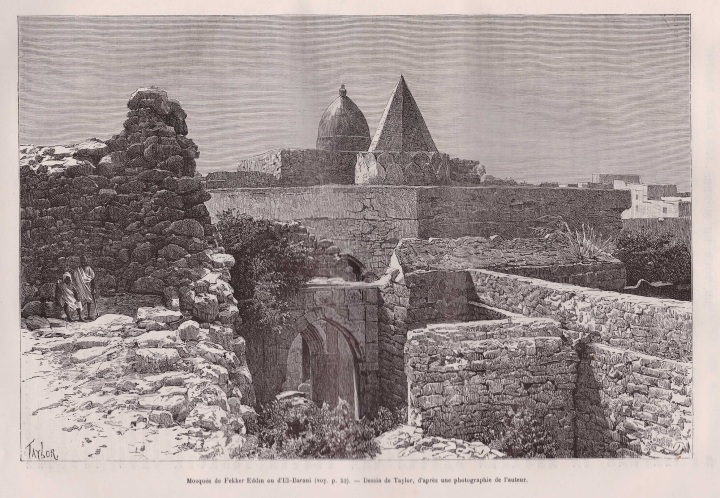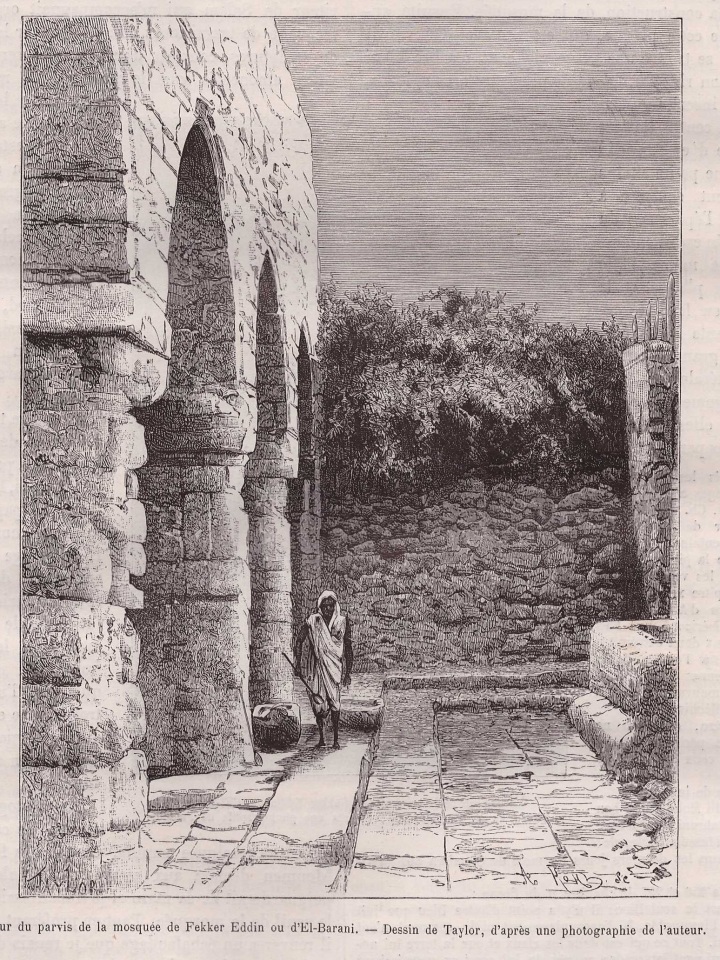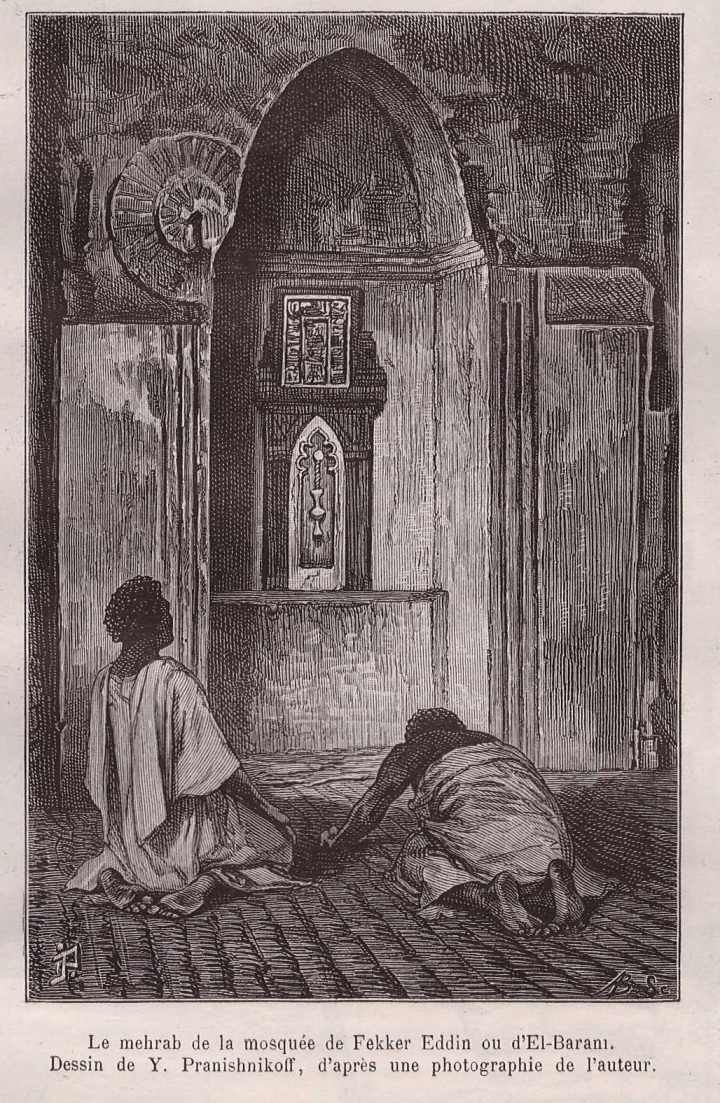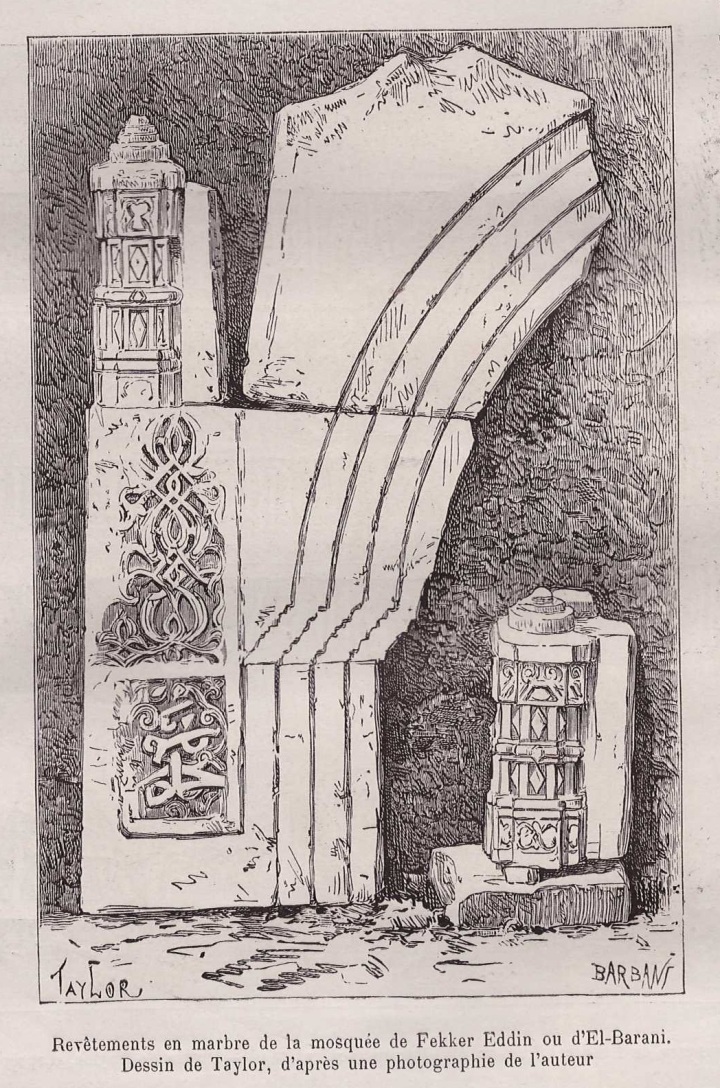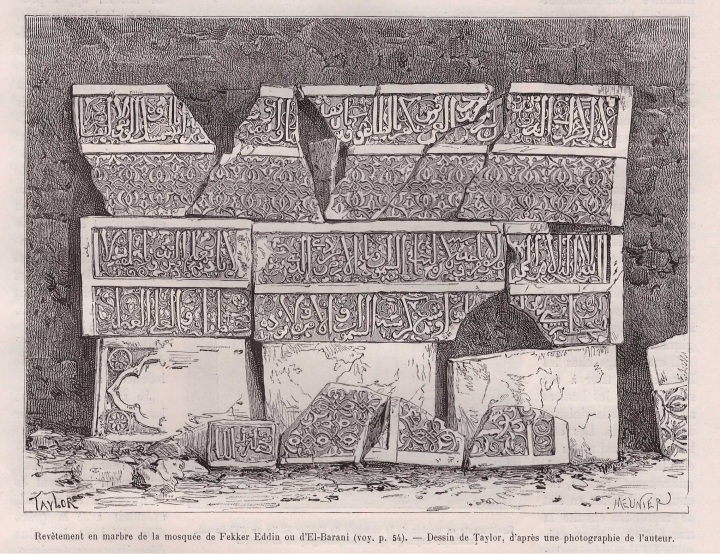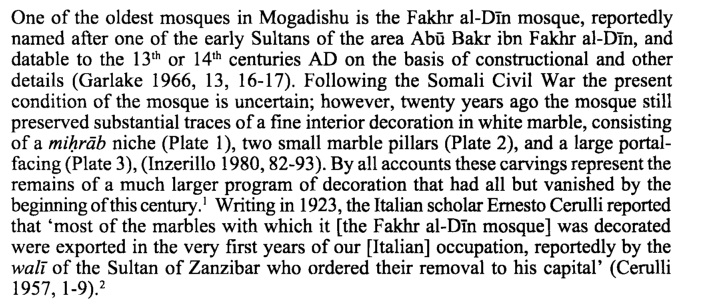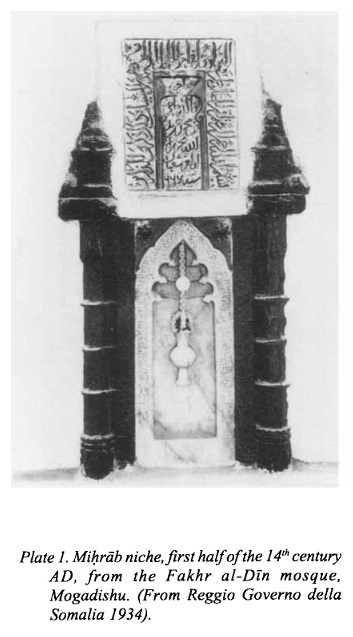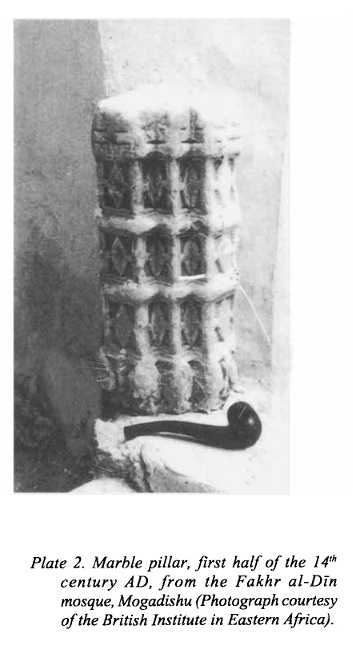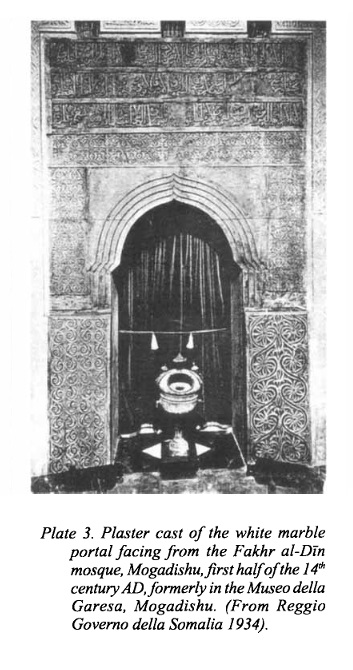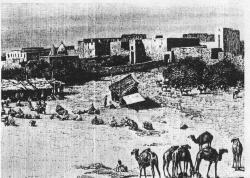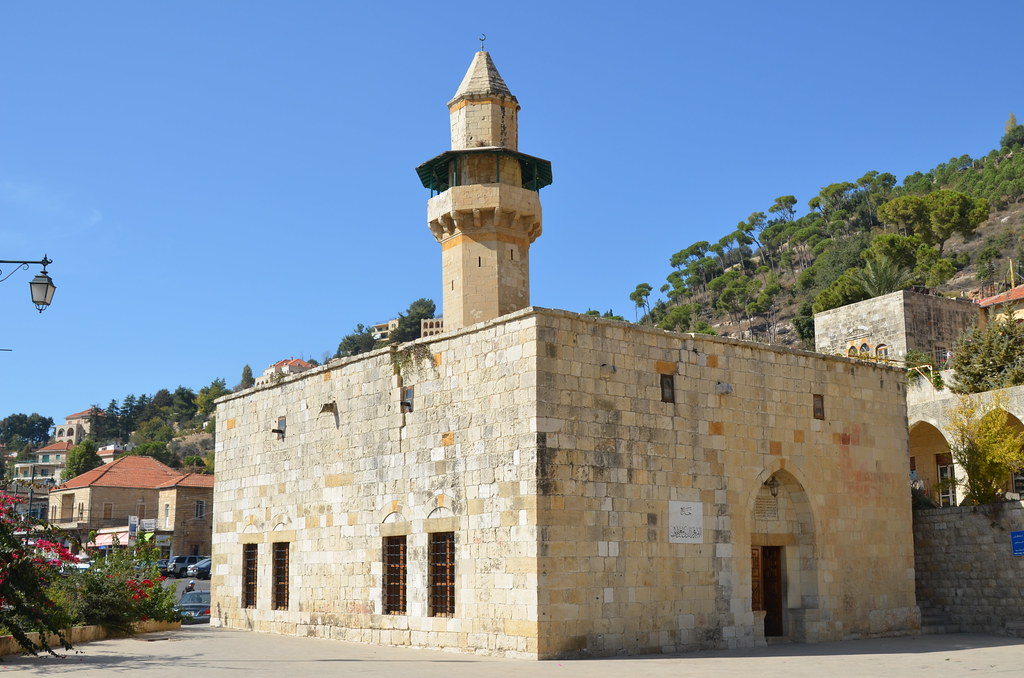
The Mosque of Fakhr al-Din, built by the first Sultan of Mogadishu in the thirteenth century, indicates formal architectural design. It is built in a compact rectangular plan with a strong, domed mihrab axis and a lofty prayer hall. Its use of conical vaults, the finely squared coral blocks of its construction, and the transitions of curved pendentives in place of squinches, further attest to the fine attention to detail and artistry at Fakhr ad-Din. The mosque, together with Husuni Kubwa on the island of Kilwa, are the two earliest remaining buildings on the East African coast and reveal planning more sophisticated than anything for centuries subsequent. Today Fakhr al-Din Mosque is located between the quarters of Xamar Weyn and Sheikh Muumin in the Somali capital city.
The entry façade has three doorways surrounded by slabs of paneled marble and carved coral with recessed orders and conical bosses jutting from their architraves. The central door of the three displays particularly ornate floral interlacing and carries an inscription. Upon entrance through these three doors, one arrives in one of three small ablution lobbies where there is a second set of doors. Again, the centermost of these doors is the most impressive. It is recessed via shallow stepped corbelling and is covered with marble slabs smothered in intertwined floral patterns. This door contains a diaper pattern of diamond shapes excised into the projecting coral bosses inset into the spandrels of the arch which is surmounted by a triple frieze.

